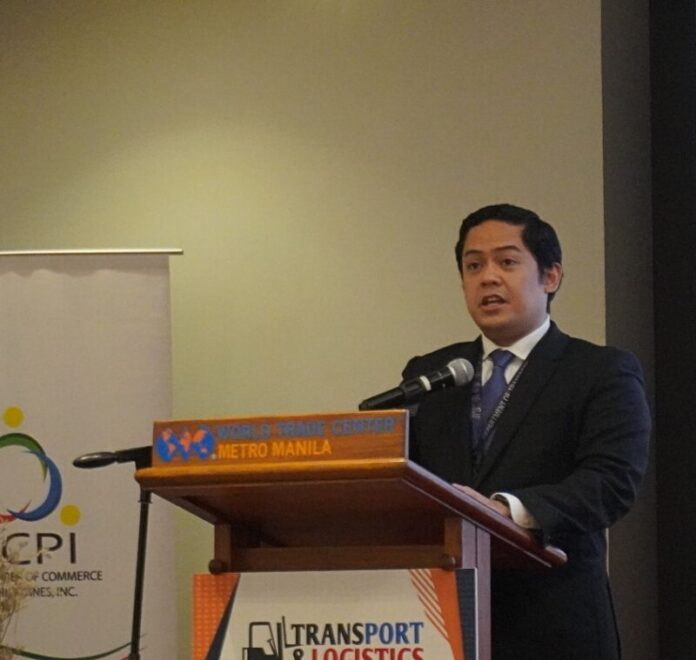-
Transport infrastructure projects in the maritime, aviation, rail, and road sectors will benefit the logistics sector
-
Transportation Undersecretary for Policy and Planning Timothy John Batan says infrastructure development will remain a “very high priority” of the administration to improve market access for logistics
-
Maritime initiatives also include adoption of policies that aim to reduce logistics costs
Various transport infrastructure projects are expected to give the logistics sector a boost, according to an official of the Department of Transportation (DOTr).
DOTr Undersecretary for Policy and Planning Timothy John Batan said “infrastructure development will remain a very high priority of this administration to improve market access for logistics as this is one of the greatest driving force for social economic growth and employment.”
“This administration is committed to finishing building and further expanding our portfolio of transport investments, including in the logistics facilitation sector,” Batan said in a presentation at the recent Transport and Logistics Forum hosted by the Italian Chamber of Commerce in the Philippines.
For the maritime sector, Batan said DOTr is pursuing, among other projects, the construction of the New Cebu International Container Port (NCICP), the updating of maritime master plans, and the construction of farm-to-market ports.
The NCICP, a project majorly funded by a loan from Export Import Bank of Korea, will have an annual capacity of 375,900 twenty-foot equivalent units (TEU) and two berths that can accommodate 2,000-TEU capacity vessels.
In 2020, a total of 296 million metric tons of cargoes were transported via sea.
The DOTr is also updating its master plans to improve logistics handling capacity. Earlier, President Ferdinand Marcos, Jr. directed DOTr to come up with a “maritime industry development plan” to develop and enhance the maritime sector and improve ports to allow more cruise ships to call the country and help the tourism industry.
Farm-to-market ports, meanwhile, are seen to complement farm-to-market roads, which are being developed by the Department of Public Works and Highways together with various development partners.
Other maritime initiatives include the adoption of policies that aim to reduce logistics costs.
Batan noted that the Philippine Ports Authority (PPA), at the instruction of Marcos and Transport Secretary Jaime Bautista to reduce transport and logistics costs, has put on hold requests for increase in port charges. PPA has also started reviewing statutory and regulatory charges, as well as indirect costs related to efficiency and productivity of ports.
READ: PPA reviews regulatory charges in bid to cut shipping, travel costs
Batan said DOTr is also advocating as a priority House Bill (HB) 1397, which aims to regulate the application of local and destination charges imposed by international shipping lines and protect the interests of consumers, local importers and exporters.
READ: DOTr supports bill regulating foreign carriers’ local charges
Various stakeholder and business groups have been supporting bills seeking to regulate local charges of international shipping lines, which they said are excessive and unnecessary.
Recognizing the importance of maritime safety and security, DOTr is also working on the continued modernization of the Philippine Coast Guard, including investing in more assets and equipment.
In the aviation sector, Batan said DOTr has to “ensure that we have enough airports and related facilities” to cope with the growing demand for logistics.
In 2020, major airports in the country handled 733 million kilograms of air cargo, of which 534 million kg were in Ninoy Aquino International Airport, 31.8 million kg at Clark International Airport, and 43.8 million kg at Mactan-Cebu International Airport; Bohol-Panglao International Airport, 2.5 million kg; General Santos, 18.1 kg; and Zamboanga International Airport, 5.7 million kg.
Batan said various regional airports have been capacitated in the past years to be able to facilitate greater logistics movement. These hubs are the Bohol-Panglao International Airport, General Santos Airport, Zamboanga International Airport, Camiguin Airport, Tuguegarao Airport, and Calbayog Airport.
He said DOTr will “continue to plan and develop more airports to be able to facilitate more logistics movement, including through public private partnerships [PPP].”
Nine major regional airport projects under the PPP scheme are in the pipeline, including Bohol-Panglao International Airport, Laguindingan International Airport, Bicol International Airport, Iloilo International Airport, Puerto Princesa International Airport, Davao International Airport, Bacolod-Silay International Airport, Kalibo International Airport, and Siargao Airport.
Other upcoming airport projects include San Miguel Corp.’s New Manila International Airport Project in Bulacan, the Cavite provincial government’s Sangley Point International Airport, and the rehabilitation and expansion of Ninoy Aquino International Airport.
The New Manila International Airport is projected to handle 458.13 million kg per year.
For rail, DOTr is reviving the capability of the Philippine railways network to handle cargo.
Batan said there are currently three investment-approved projects that are expected to contribute to freight transport. These are the 639-kilomteer Philippine National Railways (PNR) South Long Haul or the PNR Bicol, 100 km Mindanao Railway Project-Phase 1, and 70 km Subic-Clark Railway.
The DOTr will also be pursuing additional long-haul freight railways such as the Panay Railway system, which will revive the Panay Island Railway service; PNR North Long Haul to connect Metro Manila with the Ilocos and Cagayan Valley regions; and the additional segments of the MRP, including its second phase in northern Mindanao.
Aside from these projects, Batan said the logistics sector is also set to benefit from ongoing massive expansion projects in commuter railway and modernization of the road transport system as these are seen as incentives to shift from private vehicles to public transport, freeing up more road space for logistics service providers. – Roumina Pablo





